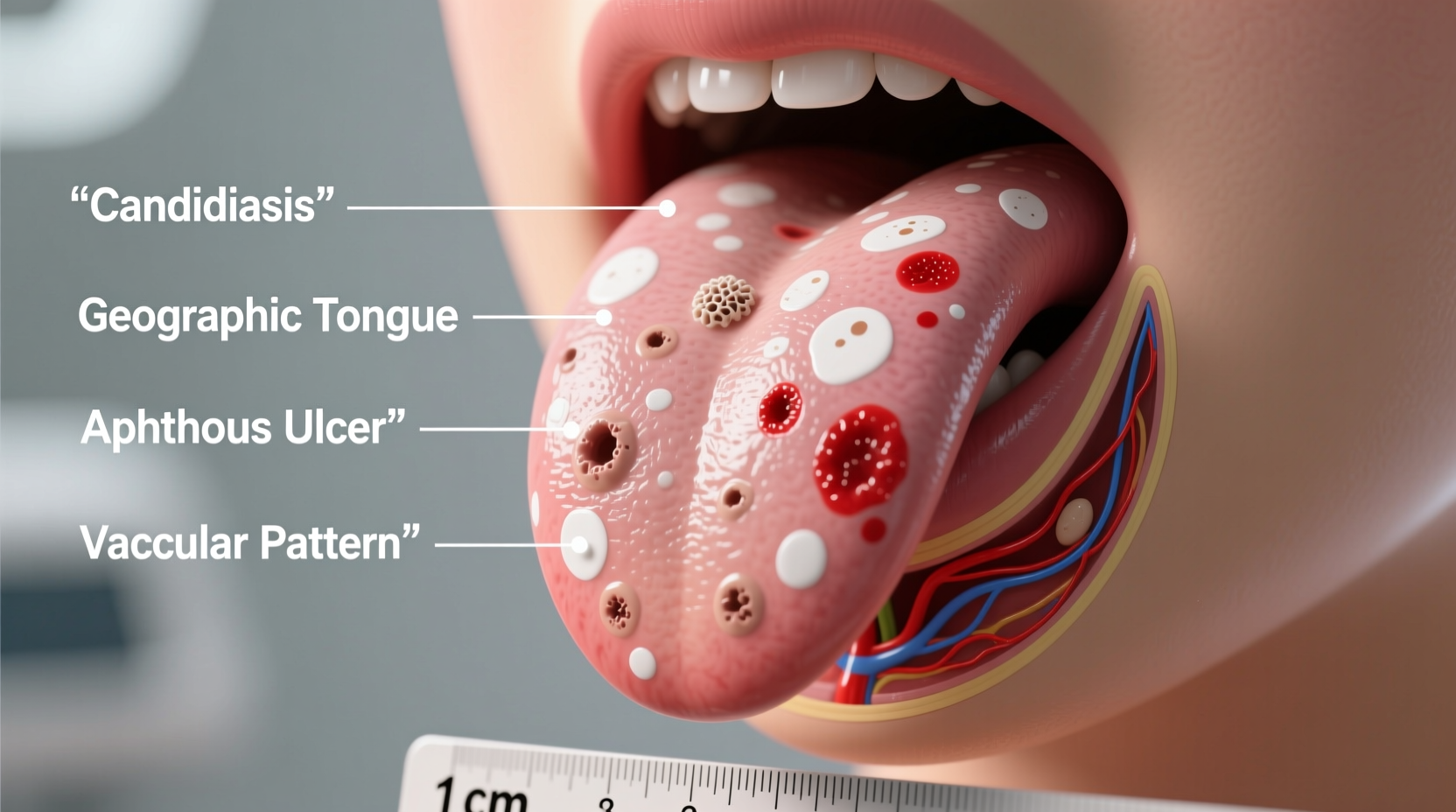A healthy tongue is typically pink and covered with tiny bumps called papillae. When unusual spots—white, red, black, or yellow—appear, it’s natural to wonder what’s causing them. While most are harmless and temporary, some may signal underlying health issues. Understanding the differences between benign conditions and those requiring medical attention helps you make informed decisions about your oral health.
Common Types of Tongue Spots and Their Causes

Tongue spots vary in color, texture, and location. Each variation often points to a different cause, ranging from irritation to infection or systemic disease.
- White spots: Often linked to oral thrush (a fungal infection), leukoplakia (excessive cell growth), or oral lichen planus (an inflammatory condition).
- Red spots: May indicate vitamin deficiencies (especially B12, folate, or iron), geographic tongue (a harmless condition with map-like patches), or early signs of viral infections like hand, foot, and mouth disease.
- Black or dark discoloration: Usually due to poor oral hygiene, smoking, certain medications, or a temporary buildup of keratin and bacteria known as “black hairy tongue.”
- Yellow coating: Can result from bacterial overgrowth, dehydration, or post-nasal drip. It’s often accompanied by bad breath.
In many cases, these spots resolve on their own once the trigger is removed—such as stopping tobacco use, improving oral hygiene, or correcting nutritional imbalances.
When to Be Concerned: Warning Signs
Most tongue abnormalities are short-lived and not serious. However, certain symptoms should prompt a visit to a healthcare provider. Persistent changes lasting more than two weeks, especially if painful or growing, warrant evaluation.
Key warning signs include:
- Sores that don’t heal within 10–14 days
- Painful ulcers that interfere with eating or speaking
- Lumps or thickened areas that feel hard
- Unexplained bleeding from the tongue
- Numbness or difficulty moving the tongue
- Spread of white patches that can't be scraped off
“Any persistent lesion on the tongue, particularly in smokers or heavy alcohol users, should be evaluated promptly. Early detection of oral cancer significantly improves outcomes.” — Dr. Lena Torres, Oral Pathologist
Do’s and Don’ts: Managing Tongue Health at Home
| Do | Don’t |
|---|---|
| Brush teeth and tongue twice daily | Irritate the area with sharp or spicy foods |
| Stay hydrated to avoid dry mouth | Smoke or use tobacco products |
| Use alcohol-free mouthwash | Ignore persistent pain or swelling |
| Eat a balanced diet rich in vitamins | Self-diagnose without professional input |
| Rinse with warm salt water for soothing relief | Scrape or cut suspicious lesions |
Step-by-Step Guide: What to Do If You Notice Tongue Spots
- Observe the spot closely: Note its color, size, texture, and whether it’s painful or changing over time.
- Assess recent habits: Have you started new medications? Consumed very hot or acidic foods? Experienced stress?
- Improve oral hygiene: Brush gently, floss, and clean your tongue. Use mild, non-alcoholic mouth rinse.
- Adjust diet: Increase intake of leafy greens, fruits, and foods rich in B vitamins and iron.
- Monitor for two weeks: Many minor issues resolve during this period.
- See a dentist or doctor: If the spot persists, grows, bleeds, or causes discomfort beyond 14 days.
Real-Life Example: A Case of Misdiagnosed Irritation
Sarah, a 34-year-old teacher, noticed a small white patch near the side of her tongue after using a new cinnamon-flavored toothpaste. Initially concerned about cancer, she avoided seeing a doctor for three weeks. The spot became slightly larger and tender. After visiting her dentist, she learned it was likely an irritant reaction caused by the essential oils in the toothpaste. Switching to a milder brand and rinsing with saline led to full resolution within ten days.
This case illustrates how everyday products can cause reactions mistaken for serious conditions—and why timely professional assessment matters.
Frequently Asked Questions
Can stress cause spots on the tongue?
Yes. Stress can weaken the immune system and trigger conditions like canker sores or exacerbate existing ones such as oral lichen planus. Managing stress through sleep, exercise, and mindfulness may help reduce flare-ups.
Is a white coated tongue always a sign of infection?
No. A white coating is often due to dead cells and bacteria trapped in the papillae, especially in people who are dehydrated, have dry mouth, or smoke. However, if the coating resists brushing and appears cottage-cheese-like, it could be oral thrush—a fungal infection needing antifungal treatment.
Can vitamin deficiency really affect my tongue?
Absolutely. Deficiencies in vitamin B12, iron, folate, and zinc are strongly linked to glossitis (tongue inflammation), soreness, and red or smooth patches. Blood tests can confirm deficiencies, and supplementation often leads to rapid improvement.
Prevention Checklist for a Healthy Tongue
- ✅ Brush teeth and tongue twice daily
- ✅ Stay well-hydrated throughout the day
- ✅ Avoid tobacco and limit alcohol consumption
- ✅ Eat a nutrient-rich diet with plenty of vegetables and whole grains
- ✅ Visit your dentist every six months for routine checkups
- ✅ Replace your toothbrush every 3–4 months
- ✅ Monitor any oral changes and document them
Conclusion: Listen to Your Body
Your tongue is a window into your overall health. While most spots are temporary and benign, dismissing persistent changes can delay diagnosis of more serious conditions, including oral cancer. Pay attention to how your mouth feels, maintain consistent oral care, and don’t hesitate to seek expert advice when something doesn’t feel right. Small habits—like staying hydrated, eating well, and regular dental visits—go a long way in preserving both oral and systemic health.









 浙公网安备
33010002000092号
浙公网安备
33010002000092号 浙B2-20120091-4
浙B2-20120091-4
Comments
No comments yet. Why don't you start the discussion?